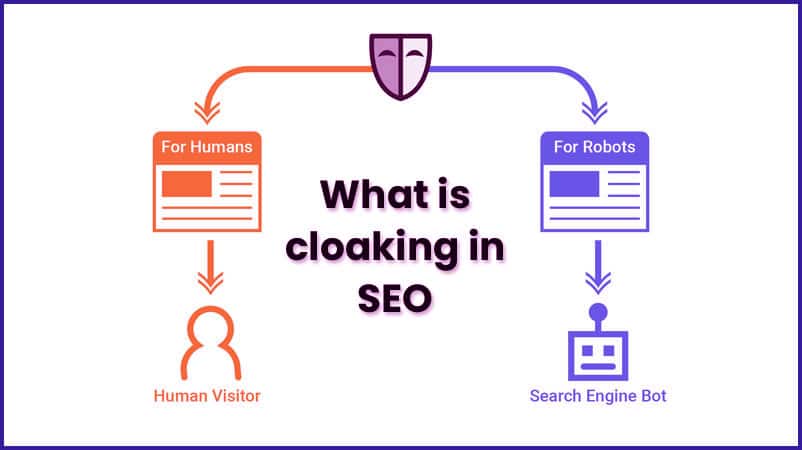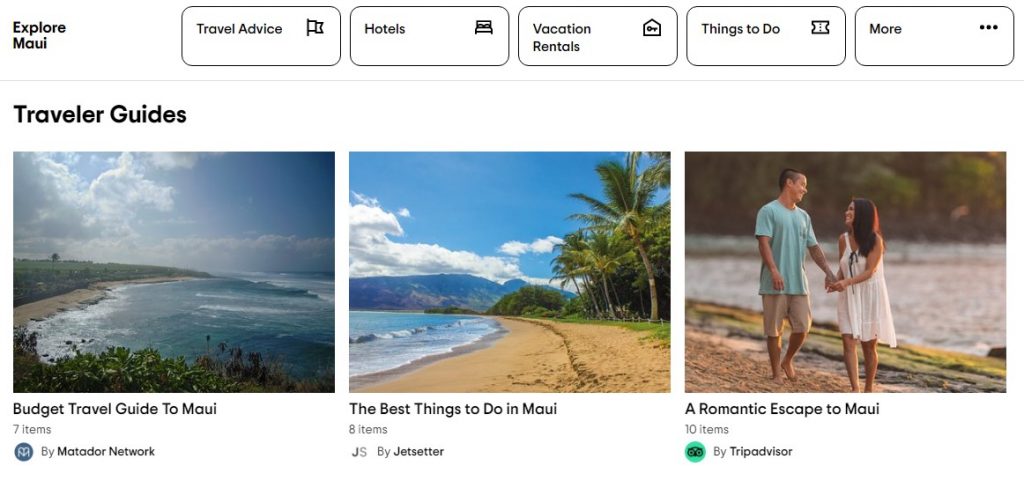
If your website changes based on a user’s behavior or interaction, then your site may pose certain risks associated with search engine optimization. In this article, you will learn how to perform SEO for dynamic content and how to mitigate the risks associated with dynamic content on SEO.
But first, let’s get a clear idea of what dynamic content is.
What is Dynamic Content?
Dynamic content is website content that changes based on the user’s behavior, interaction with your website, or some other characteristics. Dynamic content is also referred to as adaptive content and delivers personalized content based on the user.

Because dynamic content changes on an individual basis, it often results in an improved user experience and higher engagement metrics than static content which doesn’t change.
Examples of Dynamic Content
Before we continue learning about SEO for dynamic content, we thought it would be a good idea to share a few examples of dynamic content.
The first example that we can take a look at is eCommerce websites that change based on the user’s search criteria or filtering. This is only applicable to eCommerce websites that have a lot of product variations and products.
For single-product eCommerce brands or stores with very few products, dynamic content won’t pose any risk as it’s not applicable to them.
The most advanced eCommerce platforms like Amazon also recommend products based on a user’s past interactions with the platform. This is also classified as dynamic content since it changes on an individual basis and can even change each time the same user visits the website.

The second example of dynamic content is any social media feed or homepage. This includes your Facebook, Twitter, Reddit, Instagram, etc. feeds. This is classified as dynamic content because it changes depending on the user (e.g. who they follow, which pages they like, which Subreddits they are subscribed to, etc.).

While the on-page content dynamically changes per user, the homepage URL stays the same.
A third example of dynamic content is travel websites. If you browse around on Booking.com or any other travel website (e.g. Airbnb, TripAdvisor, etc.), then the on-site content actually changes based on your search location and your previous search history.
Why is SEO for Dynamic Content Important?
If your website updates according to user characteristics, then there’s a risk that Google indexes the wrong version of your website or even skips indexing it at all.
For this reason, it’s important that you perform proper search engine optimization (SEO) in order to avoid any negative impact because of the dynamic nature of your website.
Is Dynamic Content Good for SEO?
Yes, dynamic content can be good for SEO, But only if you follow the best practices for optimizing a website’s SEO.
Dynamic content personalizes a website’s user experience which can have a positive impact on various on-page metrics that influence SEO rankings.
Personalization increases user engagement and time spent on site, both of these metrics have a positive impact on a website’s search engine performance.
However, if not done properly, then dynamic content can actually have a negative impact on search engine performance.
Risks of Dynamic Content for SEO
Now, let’s briefly touch on the different risks associated with dynamic content on search engine rankings. In the next section, we’ll share how you can avoid these risks.
Duplicate Content
The first risk of dynamic content on SEO deals with duplicate content. Duplicate content is any collection of web pages that don’t have any noticeable differences when Google crawls and indexes them.

While duplicate content won’t necessarily result in a penalty from Google, it can still have a negative impact on your website’s overall quality score.
Dynamic content can create duplicate content or pages in several instances.
For example, if your eCommerce website features different product variations, and as a result, has filters that users can customize accordingly. Then Google might crawl two pages with different URL parameters but which have the same on-page content.
Keyword Cannibalization
Another risk associated with dynamic content is keyword cannibalization. Keyword cannibalization is when more than one page on a website targets the same keyword. These pages essentially compete with one another.
Websites that dynamically change can result in keyword cannibalization since dynamic content can create multiple URLs that target the same keyword or search query.
Cloaking
In SEO terms, cloaking is the act of showing search engine crawlers different content than what users would see when visiting a web page.
 Source: GSM Marketing
Source: GSM Marketing
In the eyes of Google, cloaking is spam and it is a violation of Google’s quality guidelines for webmasters. If your website gets flagged by Google for cloaking then it can have major consequences on your website’s online visibility and search engine rankings.
Cloaking is also one of the main problems associated with dynamic content and should be dealt with as soon as possible.
How to Perform SEO for Dynamic Content
Let’s take a look at how you can do SEO for dynamic content and pages. You can follow these steps to avoid getting penalized by Google.
Create Static Content
Webmasters should try to reduce the number of dynamic elements on a website when doing SEO for dynamic content.
In addition to that, SEOs and website owners can add static content to dynamic pages. This content should inform the user about the subject of the page, additionally, it should contain the target keyword(s) and keyword variations to give Google more context about your page(s).
Let’s take the example of a travel booking site. Instead of only adding dynamic content to the page, webmasters and SEOs can add static elements such as in-depth descriptions or information about relevant areas or countries.

The page can also include static customer reviews of the hotels and airlines available on the website.
When thinking of which static content to add to a dynamic page, think to yourself “what would the user find useful?”
You can also add commonly asked questions (FAQs) that a customer might want to know before making a booking to these pages.
Reduce the Number of URL Parameters
The more URL parameters a page has, the trickier it gets for Google to understand your dynamic content. Webmasters should reduce the number of URL parameters to two to three.
However, this isn’t always possible, especially for big travel and eCommerce websites. This leads us to the next solution on SEO for dynamic content on big websites - canonical tags.
Add Canonical Tags to Dynamic Pages
One of the best ways you can eliminate the risks associated with dynamic content is by using canonical tags. Canonical tags tell Google and other search engine crawlers which version of a page is the original one.
It tells Google the preferred URL among many different versions and which version should be selected to rank in the search results.
Canonical tags are especially useful if your website generates duplicate content because of its dynamic nature.

If your website generates different URL parameters based on certain user inputs or characteristics, make sure to canonicalize those pages back to the main page and add a “noindex” or “nofollow” tag to these URLs.
So, if your eCommerce website has multiple filters which generate different URL parameters, you want to canonicalize all of the following pages back to the main page:
- www.domain.com/product/running-shoes/?brand=nike&maxprice=350
- www.domain.com/product/runniing-shoes/?brand=nike&maxprice=200
Reduce the Number of Dynamic Elements on a Page
Another SEO for dynamic content best practice is to reduce the number of dynamically changing elements on a page.
By reducing dynamic elements, you’ll help Google to get a better understanding of what your page is about and it also reduces a page’s loading time.
Webmasters and SEOs should ensure that the H1 and the title tag remain static and that it includes your page’s target keyword. For eCommerce websites, make sure that “category” pages have content that remains static.
For example, if you’re selling oriental rugs, then you can create a category description and hero image that remains static irrespective of what the user selects as filters.
Optimize PageSpeed of Dynamic Pages
No one, including Google, likes to wait a long time for pages to complete loading. In fact, PageSpeed is a direct ranking factor, so if your dynamic pages take too long to fully load, then you’re at a huge disadvantage.
Naturally, adding dynamic content to your website will cause it to load slower than regular static content. However, there are ways to combat this.
The most common way to optimize PageSpeed is through various software and plugins that can help speed up your dynamic website’s loading speed or reduce the website file size.
Another step you can take to improve a dynamic website’s loading speed is to optimize the static elements on a website.
This includes reducing the file size of static images by running them through a compression tool, using browser caching, and minimizing any HTML, CSS, or Javascript files.
Conclusion
This concludes our article on SEO for dynamic content. Dynamic content is a great way to personalize the user experience of your website.
It usually results in higher user engagement metrics and as a result, can have a positive impact on bounce rate and time spent on your website. This impacts the overall search engine performance and rankings of a website.
However, always remember that dynamic content can cause problems for your SEO if not handled properly.










